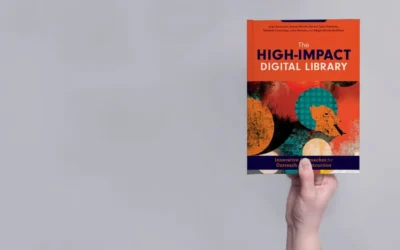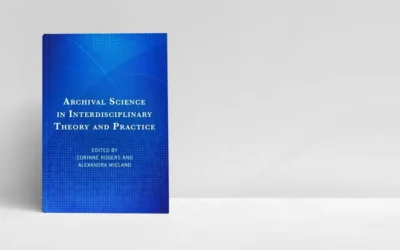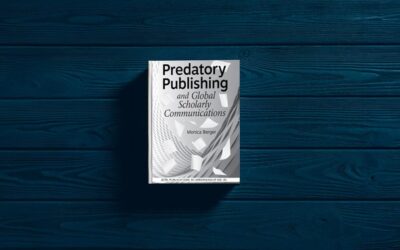Affective Networks: The “Why” of Learning
Lauren Hays
In a previous post, I introduced Universal Design for Learning (UDL), “a framework to improve and optimize teaching and learning for all people based on scientific insights into how humans learn”. As discussed in that post, there are three neural networks that UDL includes in their guidelines. The first is the affective network.
The goal of the affective network is to create purposeful and motivated learners. To do this, educators should create multiple ways for learners to engage. Every individual is motivated in different ways and providing a variety of opportunities will aid those with whom you work in learning what you want to teach them.
So, what does this look like in our special libraries? How do we create opportunities for our stakeholders to engage in multiple ways with what we are trying to teach them?
One example is to design learning so that it is relevant to your learners’ goals. Not everything can tie directly to something that is interesting to every individual; however, as mentioned in the UDL guidelines, you can “invite personal response, evaluation and self-reflection to content and activities” (CASTc, 2019, para 5.). Get feedback from your stakeholders. Learn what was beneficial to them about an activity, resource, or tutorial.
Another example is to allow individuals to move through content in the order they wish. In my own teaching, there is often content I need learners to understand first before they are ready for other concepts. However, whenever possible, I do give choice about the order in which content is learned. Certain tutorials are standalone and do not rely on any specific background knowledge. These tutorials are perfect ways for learners to feel ownership in their learning. Personally, I use this strategy when working with new hires. There are various concepts new hires need to learn, but the tutorials are not connected, so individuals can choose which tutorials to complete first and which ones to complete later.
A third example is to provide “mastery-oriented feedback” to your stakeholders as they engage in learning. Two ways to do this are to:
- Provide feedback that is frequent, timely, and specific
- Provide feedback that is substantive and informative rather than comparative or competitive (CASTb, 2019, para. 4-5).
All of the ten specific guidelines for the affective network are found on this webpage. I encourage you to review them and brainstorm ways you can apply the checkpoints. As you brainstorm, be inclusive in your definition of learners. Learners could be new hires in your company, new hires in your library, long-time employees of your organization, management, and outside constituents who use your resources. I try to approach any setting where I am conveying information to an individual or group as a learning situation. This approach has helped me reframe interactions and develop content that is more beneficial for those who receive the information. Additionally, it is important to note that individuals who work at your company may have learning disabilities. Using the principles of UDL creates a more inclusive environment.
In my next post, I will share about the second neural network: the recognition network.
Recommended Resource
McNichols, D. (n.d.). Universal Design for Learning: Out of the classroom and into the corporate world. Training Industry. Retrieved from https://trainingindustry.com/magazine/issue/universal-design-for-learning-out-of-the-classroom-and-into-the-corporate-world/
References
CAST. (2019a). About Universal Design for Learning. Retrieved from http://www.cast.org/our-work/about-udl.html#.XfLQdmRKhPY
CAST. (2019b). Increase mastery-oriented feedback. Retrieved from http://udlguidelines.cast.org/engagement/effort-persistence/mastery-oriented-feedback
CAST. (2019c). Optimize relevance, value, and authenticity. Retrieved from http://udlguidelines.cast.org/engagement/recruiting-interest/relevance-value-authenticity
Lauren Hays
Lauren Hays, PhD, is an Assistant Professor of Instructional Technology at the University of Central Missouri. Please learn more about Lauren and read her other posts about skills for special librarians; then take a look at Lucidea’s powerful ILS, SydneyEnterprise, used daily by innovative special librarians.
Similar Posts
Researching with GenAI: Tools & Tips for Special Librarians
When GenAI first became widely available, there was a great deal of discussion about how it would “hallucinate”—that is, make up content and sound very sure of itself when doing so.
Interview with the Author: Anna Neatrour on The High Impact Digital Library
Many different types of libraries have digital components, and it is important to get those digital collections in front of stakeholders.
Interview with the Editors: Wieland and Rogers on Interdisciplinary Archival Science
Alexandra Wieland and Corinne Rogers co-edited Archival Science in Interdisciplinary Theory and Practice. My interview with them is below.
Interview with the Author: Monica Berger on Predatory Publishing
Predatory publishing is a concern in all areas of librarianship. In special libraries, librarians work with experts in various fields. It is vital that special librarians understand the sector-relevant publishing landscape, and which publications maintain academic integrity.




Leave a Comment
Comments are reviewed and must adhere to our comments policy.
0 Comments